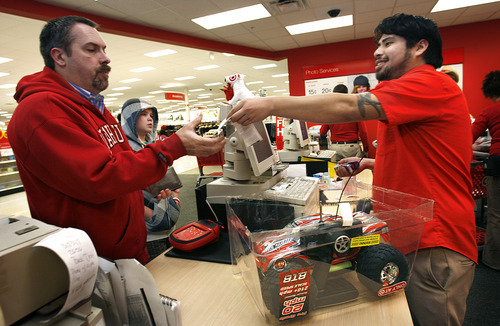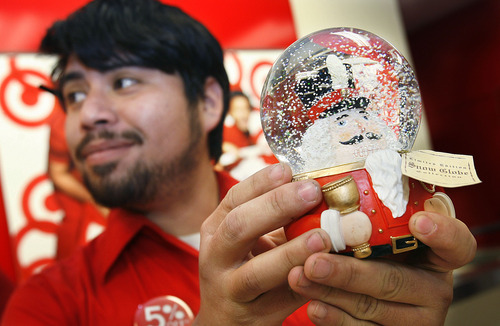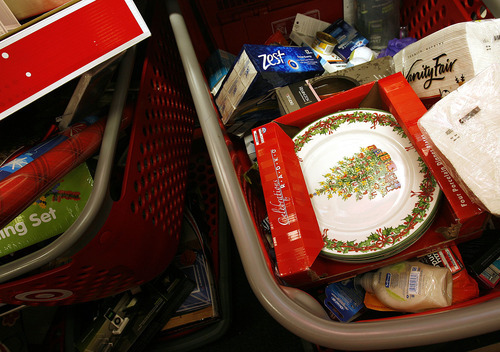This is an archived article that was published on sltrib.com in 2010, and information in the article may be outdated. It is provided only for personal research purposes and may not be reprinted.
Alina Starr didn't waste time telling a Target employee why she wanted to return a digital camera that was a Christmas gift.
"I don't like it," Starr said.
Armed with her gift receipt, she received the full cost of the item in store credit on a gift card, then hit the floor of Target's store at 1110 S. 300 West to shop for the digital camera she wanted.
It's a dance that occurs every year on the day after Christmas, and one retailers nationally are so familiar with that haggling, delays and long lines have become almost a thing of the past.
In an age when the competitive edge between retailers often rests on customer service, fair and hassle-free returns can be vital. For many retailers, every customer minute lost at the returns counter is one more minute that same customer could be roaming the shopping aisles to take old holiday merchandise off the shelf at sale prices.
"It's a really busy day for us, but the sales don't reflect that," said Carrissa George, one of seven store managers at Target. "They return something, then maybe purchase something for at least half price."
Or at least something that fits, works, entertains, or is easy to understand and operate. Clothing, mostly children's, makes up a good portion of returns, said Target guest service representative Armando Mata. So do DVDs. Those who rave about a particular movie they saw in theaters before Christmas are in grave danger of receiving the same movie from multiple friends.
"People come in with three separate copies of Inception," Mata said.
The day after Christmas is traditionally a nightmare for customer service centers, inundated with calls from people attempting to understand their new computers, video games consoles and other high-tech gadgets. The customer service counters of retail stores, meanwhile, simply process returns from parents whose toddlers received technologically sophisticated gifts more appropriate for teenagers.
Then there are the gifts that just don't work. Milt Stewart, a 47-year-old University of Utah employee, returned his son's remote control car after detecting a steering problem.
"With four kids, you expect to return something," Stewart said. "These days, though, it's painless. I remember when the lines for returns used to be longer than the lines for checkout."
The National Retail Federation tracked last year's gift return numbers in a November survey of more than 8,500 consumers. Two-thirds of those polled never returned a gift last year, it found, while those who did returned an average of 3.2 percent of all gifts they received last "winter holiday season."
Men are slightly more likely than women to return gifts; those between the ages of 18 and 34 return the most gifts of any age group, while seniors age 65 and up return the least, according to the survey. In a four-way race between the Northeast, Midwest, Southern and Western states, residents of the West tend to return the most gifts.
One statistic that matters most to retailers is the percentage of shoppers who either retain, or even give, the receipt along with the gift. Time is money, and few things save retailers' holiday time like a handy receipt. The NRF this year found that almost 61 percent of shoppers "provide a gift receipt more or some of the time when given a gift," according to a federation press release. That's up from 58.5 percent last year.
Returns and exchanges were less frequent Sunday down the street from Target, at Costco's 300 West location. Staci Doi, the store's membership refund cashier, said many people take care of their returns later in the post-holiday week.
"People are scared to return too soon," Doi said. "Everyone I've helped today was relieved to find it's not too busy."







